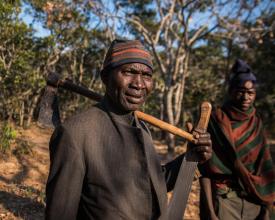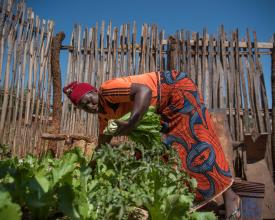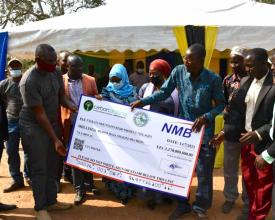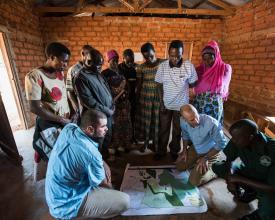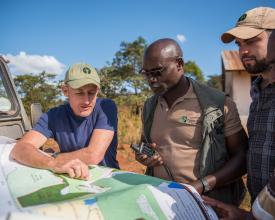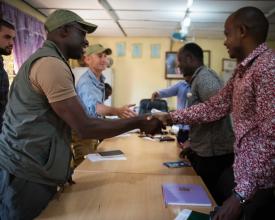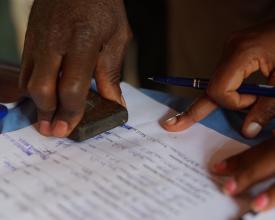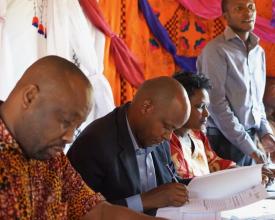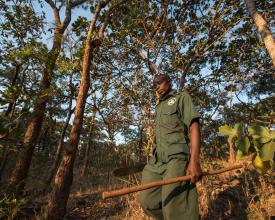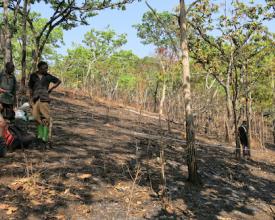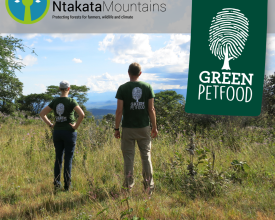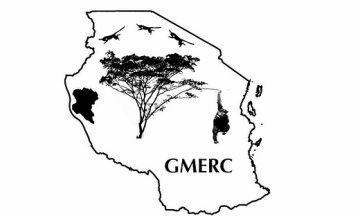
Projet des montagnes Ntakata - Une solution climatique naturelle financée par le marché volontaire du carbone qui profite à la fois aux populations et à la biodiversité.PATHFINDER AWARD 2021 WINNER
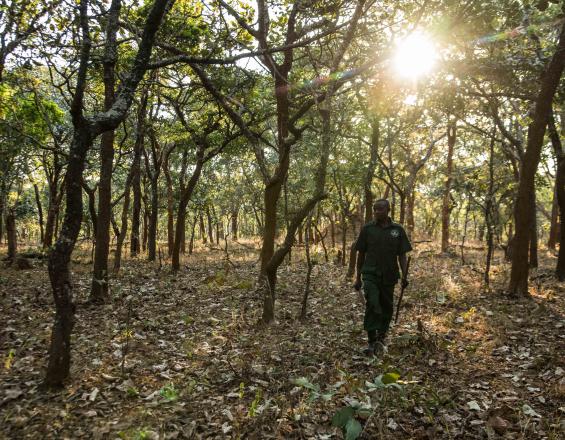
Le projet des monts Ntakata est une solution climatique naturelle qui protège 216 944 hectares de forêts menacées appartenant à des communautés. En utilisant le cadre de suivi et la méthodologie REDD (réduction des émissions dues à la déforestation et à la dégradation des forêts) pour la comptabilisation du carbone, huit communautés forestières maintiennent 1 200 000 arbres sur pied, évitant ainsi 550 000 tonnes d'émissions de CO2 par an. Les crédits carbone qui en résultent sont certifiés par les normes VCS et CCBA de VERRA et vendus sur le marché volontaire international du carbone, rapportant aux communautés 581 650 dollars depuis la première émission de crédits du projet en 2020. La sécurisation des forêts gérées de manière indigène est essentielle à l'atténuation du changement climatique et aux efforts de conservation de la biodiversité.
Contexte
Défis à relever
Défi environnemental :
La déforestation et le changement d'affectation des sols contribuent à environ un quart des émissions de gaz à effet de serre d'origine humaine dans le monde, tandis qu'en Tanzanie, ils représentent environ 70 % des émissions nationales de gaz à effet de serre. La principale menace pour la forêt est l'agriculture itinérante. En outre, les pâturages des éleveurs, l'exploitation minière et le développement de nouvelles infrastructures ont un impact négatif sur la forêt, avec des conséquences sur l'eau, les moyens de subsistance et la conservation.
Défi social :
Des plans d'utilisation des terres et des frontières non définis empêchaient les membres de la communauté de défendre et de protéger leur forêt, ce qui entraînait des conflits.
Défi économique :
Il existe peu d'opportunités économiques dans les montagnes de Ntakata, dont la majorité dépend d'écosystèmes forestiers sains. Les habitants cultivent de petites parcelles familiales, récoltent du miel et du bois. Le projet REDD crée un flux de revenus supplémentaires qui maintient la forêt intacte, améliorant ainsi sa capacité à fournir des services écosystémiques essentiels.
Emplacement
Traiter
Résumé du processus
Les cinq éléments sont liés entre eux et doivent être mis en œuvre dans l'ordre suivant.
1. la collaboration avec les partenaires du paysage apporte l'expertise nécessaire au projet
2. Les contrats légaux entre les communautés propriétaires des ressources et Carbon Tanzania forment la base d'une relation de travail à long terme et solidifient l'accord de partenariat menant au commencement du développement du projet.
3. Le développement du projet commence par une gestion participative de l'utilisation des terres et le développement de plans d'utilisation des terres, ce qui ne peut se faire qu'une fois que les relations et les contrats ont été formés. La démarcation des limites des réserves forestières des terres villageoises contribue à sensibiliser au projet et à prévenir les conflits, ce qui renforce les contrats.
4) L'élaboration d'un système de paiement basé sur les résultats pour la conservation à l'aide d'une méthodologie REDD peut avoir lieu une fois que les trois étapes précédentes ont été franchies. Après la vérification initiale, des crédits carbone certifiés sont émis.
5. L'accès au marché volontaire du carbone ne peut commencer qu'une fois le projet certifié.
Blocs de construction
Plans d'occupation des sols, y compris la délimitation des réserves forestières des villages et la gestion participative de l'occupation des sols.
Les populations autochtones sont les gardiens les plus efficaces des écosystèmes forestiers, et le succès du projet REDD des Monts Ntakata peut être directement attribué à l'implication des communautés forestières qui vivent dans les forêts et en dépendent pour leurs moyens de subsistance. En travaillant avec les peuples autochtones et les communautés forestières qui possèdent et gèrent légalement leurs ressources naturelles, nous pouvons nous assurer qu'ils bénéficient directement de la protection de leurs ressources naturelles et du financement du carbone généré par les activités du projet.
Les plans d'utilisation des terres qui sont déterminés et délimités par les membres de la communauté renforcent la sensibilisation locale et réduisent les conflits.
Les propriétaires des ressources locales sont directement impliqués dans le développement du projet REDD des Monts Ntakata dès le début avec des réunions d'introduction avec les villages et les communautés du projet qui se concentrent sur le consentement libre, préalable et informé (CLPI). La gestion participative de l'utilisation des terres commence alors avec les communautés qui déterminent comment leurs plans d'utilisation des terres seront zonés et qui se mettent d'accord sur les limites. Une fois que tous les membres de la communauté ont accepté les plans d'utilisation des terres établis, les limites des réserves forestières des terres villageoises sont alors délimitées pour faciliter la protection.
Facteurs favorables
Les communautés forestières au cœur du projet doivent avoir des droits de propriété et de gestion légaux sur leurs ressources naturelles, avec des limites clairement définies.
Leçon apprise
L'une des leçons les plus importantes tirées du développement du projet REDD est qu'une fois que les populations autochtones et forestières ont les droits légaux et les droits fonciers associés sur leurs ressources naturelles, et une fois que les outils pour mettre en œuvre les activités de protection de la forêt ont été développés en collaboration, la forêt est effectivement protégée.
Collaboration avec les partenaires du paysage, y compris les gouvernements des villages et des districts, TNC et Pathfinder International (Tuungane).
La collaboration et la coopération avec les collectivités locales et les organisations qui partagent une vision et des objectifs communs permettent d'obtenir de meilleurs résultats avec une plus grande efficacité, à la fois en termes de ressources utilisées et de fonds déployés.
La première étape consiste à identifier des partenaires ayant des objectifs communs mais des forces différentes pour obtenir de meilleurs résultats. Il faut ensuite prendre le temps de se rencontrer régulièrement, afin de développer et d'entretenir les relations, de mieux comprendre les besoins individuels et de revoir et mettre à jour les procédures pour garantir le partage des ressources et l'optimisation des atouts.
Facteurs favorables
Une compréhension commune de l'importance des droits fonciers des communautés forestières, du développement et de la promotion de la bonne gouvernance et du respect des priorités de développement des communautés est essentielle pour une collaboration réussie.
Leçon apprise
Le processus de collaboration avec les partenaires du paysage et les institutions gouvernementales locales exige une approche à long terme afin d'instaurer une véritable confiance et une compréhension mutuelle. Nos relations avec nos partenaires locaux ont généralement été positives et mutuellement bénéfiques, mais nous avons appris que des efforts continus doivent être faits pour s'assurer que l'alignement des objectifs et des valeurs est maintenu entre les institutions, car il peut être difficile pour le nouveau personnel des organisations respectives d'embrasser immédiatement les relations historiques entre les partenaires.
Contrats légaux entre les communautés propriétaires des ressources et Carbon Tanzania
Les projets REDD nécessitent des engagements à long terme entre les communautés propriétaires de forêts et le développeur du projet afin de fournir des crédits carbone authentiques et de haute intégrité qui évitent les émissions en réduisant la déforestation tout en améliorant les moyens de subsistance et en protégeant la biodiversité. Les contrats garantissent que les deux parties sont conscientes de cet engagement à long terme et de leurs responsabilités respectives.
Le contrat entre les communautés forestières des montagnes Ntakata et Carbon Tanzania, le développeur du projet, est d'une durée de 30 ans. Cette durée inclut les deux années nécessaires au développement et à la certification du projet REDD. Avant que les contrats ne soient signés, Carbon Tanzania organise des réunions de présentation avec les membres de la communauté qui se concentrent sur le consentement libre, préalable et éclairé (CLPI) afin de s'assurer que les droits des communautés sont respectés au cours de l'élaboration du contrat.
Facteurs favorables
De nombreuses lois et réglementations tanzaniennes sont conçues pour permettre la propriété et la gestion locales des ressources et des affaires. Ces dispositions sont inscrites dans la loi de 1999 sur les terres villageoises, la loi de 2002 sur les forêts et la loi de 1982 sur l'administration locale, sur lesquelles repose le projet des monts Ntakata. Ces lois constituent les fondements du contrat qui guide les activités et les responsabilités du projet, en précisant que les villages et le district ont toute autorité sur l'application de leurs règlements, la protection de la forêt et les systèmes de gestion financière.
Leçon apprise
L'existence de lois ne garantit pas toujours qu'elles s'intègrent dans la vie et les activités des collectivités locales ou des communautés. Nous avons donc appris que le processus de mise en œuvre des activités du projet, avec la nécessité associée pour toutes les parties prenantes de comprendre leurs droits et la loi, est le meilleur moyen de concrétiser les exigences légales. Nous avons travaillé avec toutes les parties prenantes par le biais de divers processus d'éducation, de formation et de facilitation pour comprendre à la fois la position juridique, mais aussi les actions pratiques requises pour remplir les obligations de la loi.
Un système de paiement pour la conservation basé sur les résultats, mesuré et contrôlé à l'aide d'une méthodologie de projet REDD (déforestation évitée).
Les projets REDD (réduction des émissions dues à la déforestation et à la dégradation des forêts) permettent d'établir un lien entre la gestion durable des forêts biodiversifiées et l'amélioration de l'économie et des moyens de subsistance. Grâce au cadre de suivi et à la méthodologie REDD pour la comptabilisation du carbone, les communautés forestières des monts Ntakata sont en mesure de percevoir des revenus liés au carbone en réduisant les taux de déforestation dans les forêts riches en faune et en flore de l'ouest de la Tanzanie.
Une fois qu'un projet REDD a été développé et vérifié, il doit faire l'objet d'une certification régulière afin de prouver que la déforestation a diminué et que les crédits carbone qui en résultent sont réels, mesurables, permanents et additionnels. Sans certification, les crédits carbone ne peuvent être vendus, ce qui met fin à cette source de revenus.
Facteurs favorables
L'appropriation du projet par les communautés forestières qui mènent les activités de protection de la forêt est essentielle à la réussite du projet REDD basé sur les résultats.
Une équipe dédiée au long processus de développement et de certification du projet REDD et l'engagement des communautés forestières à assumer leurs responsabilités pendant la durée du contrat sont fondamentaux pour la réussite du projet.
Leçon apprise
La transparence et la responsabilité mutuelle entre le développeur du projet et les communautés sont impératives tout au long du développement du projet et de l'exécution des activités du projet.
Accès au marché volontaire du carbone.
L'accès au marché volontaire du carbone fournit un financement inconditionnel permettant aux communautés de tirer des revenus de la protection de leurs ressources naturelles. Ces revenus permettent aux communautés forestières de s'approprier le projet et de déterminer la meilleure façon de dépenser ces revenus pour améliorer les activités de protection de la forêt et renforcer le développement communautaire dans l'intérêt de l'ensemble de la communauté.
Carbon Tanzania est le développeur du projet qui relie les communautés forestières au marché volontaire international du carbone en recherchant des clients, en organisant la vérification et en enregistrant les crédits de carbone certifiés dans les registres environnementaux respectifs.
Facteurs favorables
Pour que les crédits carbone puissent être vendus sur le marché volontaire international du carbone, ils doivent d'abord être vérifiés par une norme internationale de certification par une tierce partie. Le projet des monts Ntakata est certifié par les normes VCS et CCBA de VERRA.
L'accès au marché doit également être établi. Carbon Tanzania dispose d'un réseau établi au sein du marché volontaire du carbone permettant la vente des crédits carbone certifiés.
Leçon apprise
Les clients qui achètent des crédits carbone doivent avoir de véritables stratégies de réduction des émissions de carbone afin de confirmer la légitimité du projet qui génère les crédits carbone certifiés.
La plupart des clients ont également leurs propres exigences en matière de certification et de RSE, ce qui peut déterminer la norme de certification selon laquelle leurs crédits doivent être vérifiés.
Impacts
Le projet bénéficie à 38 000 personnes qui vivent dans des forêts saines et en dépendent pour fournir les services écosystémiques nécessaires à leur mode de vie agricole. La protection des forêts communautaires a rapporté 581 650 dollars à ces populations, ce qui leur permet de déterminer leurs propres besoins en matière de développement. Elles reçoivent les revenus deux fois par an et, en tant que communauté, déterminent comment les allouer - généralement au fonds de santé communautaire, à la construction d'infrastructures pour améliorer les possibilités d'éducation, au financement des Village Game Scouts (VGS) et à d'autres activités de protection de la forêt, au développement d'opportunités économiques et au financement d'autres besoins de développement communautaire au fur et à mesure qu'ils se présentent.
Les crédits carbone représentent les émissions évitées qui seraient émises si les forêts étaient abattues. Ces crédits sont vendus sur le marché volontaire du carbone à des organisations qui compensent leurs émissions inévitables, ce qui contribue à atténuer le changement climatique.
Les forêts constituent l'habitat de 12 espèces menacées, dont la plus grande population de chimpanzés robustes de l'Est. Grâce au VGS, la communauté enregistre l'emplacement et l'âge des nids de chimpanzés et soumet les données au Greater Mahale Ecosystem Research and Conservation Centre (GMERC) dans le but d'améliorer la compréhension des chimpanzés au sein de la communauté mondiale.
Bénéficiaires
8 communautés totalisant 36 000 personnes sont engagées dans le projet REDD et sont responsables des opérations quotidiennes - ce sont ces personnes qui sont les bénéficiaires des résultats environnementaux et économiques.
Objectifs de développement durable
Histoire
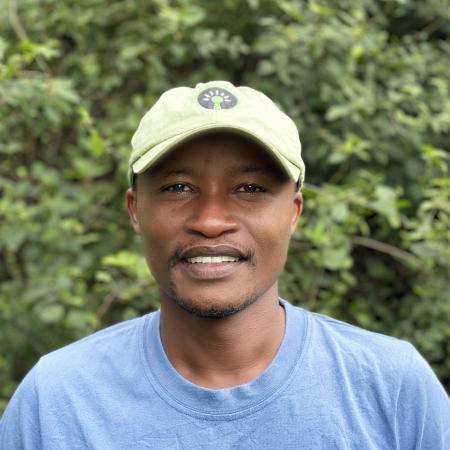
Frank Kweka est un jeune homme qui a grandi dans un village rural des montagnes Ntakata et qui a développé une profonde compréhension de son environnement en participant au programme Roots & Shoots de l'Institut Jane Goodall. Tout au long de sa jeunesse et jusqu'au début de l'âge adulte, il a pris conscience de l'impact négatif de l'homme sur les forêts qui l'entouraient et a décidé d'étudier la conservation, obtenant une licence en études environnementales à l'université de Dar es Salaam. À son retour dans les montagnes de Ntakata, il a obtenu un contrat à court terme en tant qu'assistant au département des ressources naturelles du Conseil de l'environnement du district de Tanganyika. À la fin de son contrat, il a continué à faire du bénévolat pendant plusieurs années pour assouvir sa passion, tout en cultivant une petite parcelle d'un demi-hectare pour subvenir aux besoins de sa famille.
Pendant son volontariat, il a été témoin d'une forte rotation de personnes venant de Dar es Salaam et d'autres zones urbaines pour occuper des emplois dans le secteur de l'environnement dans les montagnes de Ntakata. Peu de temps après, les visiteurs repartaient en ayant peu investi dans la région que Frank avait toujours appelée sa maison.
Lorsque Carbon Tanzania a identifié le besoin d'employer un directeur de projet, ils étaient déterminés à ce que le succès du projet repose sur le fait qu'un membre de la communauté remplisse ce rôle. L'expérience et la passion de Frank ont été rapidement reconnues et il a été recruté pour ce poste en 2019. Au cours des deux dernières années, l'engagement de Frank dans le projet a été une force motrice pour son succès, le projet des montagnes Ntakata étant désormais l'un des projets les plus impactants et les plus respectés dans la région.
L'expérience de Frank et les relations qu'il entretient avec ses anciens employés du bureau de district garantissent le bon déroulement du projet et son efficacité.
Le lien de Frank avec sa communauté est profond, ce qui lui permet de voir comment le projet peut répondre au mieux aux besoins de tous les membres de la communauté. L'apport de Frank a permis de garantir une assurance maladie à plus de 36 000 membres de sa communauté, de dépenser équitablement les revenus dans les huit villages pour développer les ressources éducatives et de mettre en place des initiatives telles que la Community Conservation Bank (Cocoba), une initiative de microfinancement conçue pour apprendre aux femmes à ouvrir de petites entreprises respectueuses de l'environnement. Grâce aux conseils de Frank, les membres de la communauté sont en mesure de déterminer leurs propres besoins en matière de développement, tout en acquérant une meilleure compréhension de la nécessité d'avoir des forêts intactes et saines.

